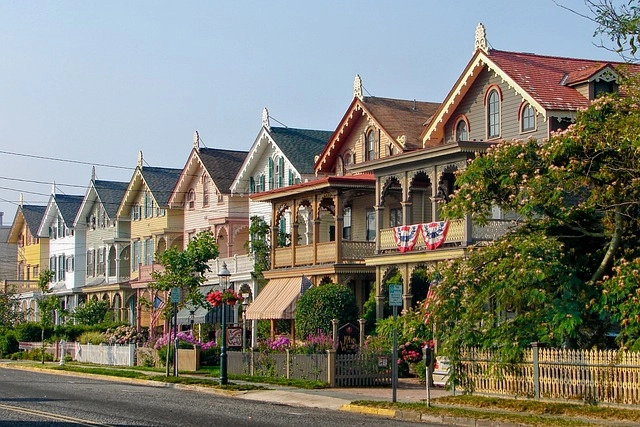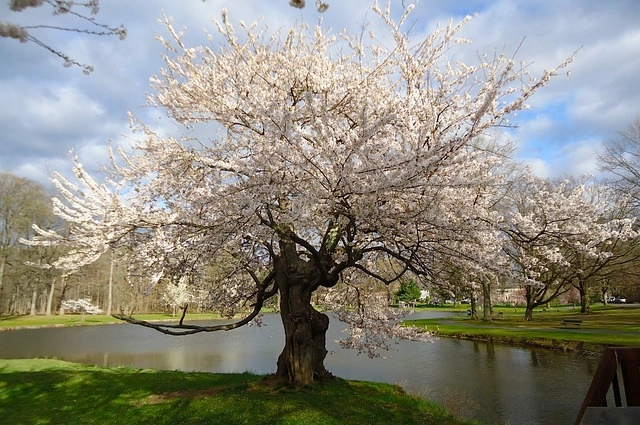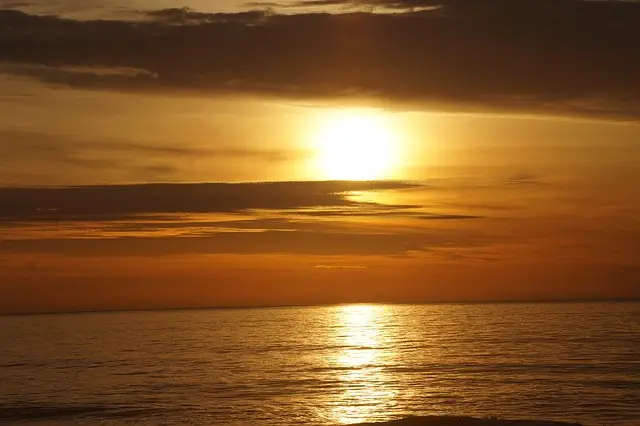Cape May Point in Cape May County, New Jersey, is a natural and historical gem, offering a unique blend of ecological richness and cultural heritage. This area along the Atlantic coast is a vital stopover for migratory birds on the Atlantic Flyway, with habitats like maritime forests, freshwater marshes, and extensive shrublands supporting over 500 bird species. The Cape May Point State Natural Reserve and the nearby Edwin B. Forsythe National Wildlife Refuge are key destinations for birdwatchers and nature enthusiasts. Beyond its ecological significance, Cape May County's maritime history is evident through landmarks such as the Cape May Lighthouse, historical sites like Fort Miles Historic Site, and museums that preserve the region's seafaring legacy and contributions to American maritime history. The county's festivals and events celebrate local traditions, ensuring a rich tapestry of experiences for visitors throughout the year. Cape May County New Jersey is a destination where one can enjoy both the thrill of outdoor activities and the tranquility of cultural exploration.
Discover the myriad charms of Cape May Point, a natural treasure nestled within New Jersey’s Cape May County. This article invites readers to explore its diverse ecosystems, rich maritime heritage, and cultural landmarks. Delve into the region’s biodiversity, which earns it acclaim as a haven for migratory birds and an essential ecological site. Learn about the area’s storied past as a maritime crossroads and witness the grandeur of its historic lighthouse. Whether you’re an avid birdwatcher or a history enthusiast, Cape May Point offers unique experiences for all. Plan your visit to this New Jersey gem with our practical tips and highlights of its must-see spots.
- Discovering the Natural Wonders of Cape May Point, New Jersey: A Biodiverse Haven
- The Rich Maritime History of Cape May County, New Jersey
- Birdwatcher's Paradise: Cape May Point's Migratory Marvels
- Exploring the Cultural Heritage and Lighthouse Legacy of Cape May Point
- The Unique Ecosystem of Cape May Point: Understanding Its Significance
- Planning Your Visit to Cape May County, New Jersey: Tips and Must-See Spots
Discovering the Natural Wonders of Cape May Point, New Jersey: A Biodiverse Haven

Cape May Point, situated at the southernmost tip of New Jersey, is a natural treasure trove that offers visitors a glimpse into one of the most biodiverse habitats along the Atlantic coast. This area within Cape May County, New Jersey, is renowned for its rich array of ecosystems, including maritime forests, freshwater marshes, and diverse shrublands that provide critical habitat for a myriad of species. The region’s unique geography and climate have fostered an environment where both resident and migratory wildlife thrive. Birdwatchers and nature enthusiasts are drawn to the Cape May Point State Park, part of the larger Cape May National Wildlife Refuge complex, which offers unparalleled opportunities for observing rare and endangered species, with the fall migration season being particularly spectacular. The diverse flora and fauna found here are not only a testament to the area’s ecological significance but also contribute to its role as a crucial stopover point for birds during their annual migrations. Cape May County, New Jersey, is thus a hidden gem for those looking to experience the natural wonders of the East Coast up close, offering a rich tapestry of biodiversity that is both educational and awe-inspiring.
The Rich Maritime History of Cape May County, New Jersey

Cape May County, New Jersey, is steeped in a rich maritime history that stretches back centuries, reflecting its strategic location along the Atlantic coastline. The region’s proximity to the open sea made it a significant port of call for European settlers and later, a critical point for commercial and military maritime activities. Over the years, Cape May County has been a hub for various maritime industries, including whaling, fishing, and shipbuilding, contributing significantly to the local economy. The county’s numerous lighthouses, like the historic Cape May Lighthouse, have guided vessels safely to shore, marking the importance of seafaring in the region’s past and present.
The waters off Cape May County have been the scene of pivotal moments in American maritime history, including the “Lusitania” disaster during World War I and the vital role it played in the transport of goods and troops during both World Wars. The county’s maritime legacy is further cemented by its participation in the coastal defense system during the 19th and 20th centuries, with forts like the Fort Miles Historic Site standing as testaments to this period. Today, Cape May County continues to honor its maritime heritage through various museums and historical sites that preserve artifacts and narratives of its seafaring past, ensuring that the stories of those who navigated these waters are remembered and celebrated.
Birdwatcher's Paradise: Cape May Point's Migratory Marvels

Cape May Point in New Jersey is a magnet for birdwatchers and nature enthusiasts from around the globe, offering a window into one of the most spectacular displays of migratory birds. Nestled within Cape May County, this slice of land jutting into the Atlantic boasts an ecological richness that is unparalleled. The area serves as a critical stopover for over 500 species of birds during their annual migrations, with the fall and spring seasons being particularly vibrant with activity. The diverse habitats found here, including marshes, bays, and beaches, provide a feast of food sources and resting areas for these winged travelers. Birdwatchers come to witness rare sightings like the Cape May Warbler, Cerulean Warbler, and the Yellow-billed Cuckoo, which can be harder to spot in other regions. The region’s strategic location along the Atlantic Flyway makes it a crucial stop for these migrants, ensuring that Cape May Point remains a dynamic hub of avian activity year-round. Visitors to Cape May County New Jersey are encouraged to explore this natural wonder, offering not just an opportunity to observe birds in their element but also to engage with the rich history and vibrant local community.
Exploring the Cultural Heritage and Lighthouse Legacy of Cape May Point

Situated at the southernmost tip of New Jersey, Cape May Point is a locale steeped in rich cultural heritage and lighthouse legacy that draws visitors from far and wide. This area, part of Cape May County, is not just a destination for its natural beauty but also for the stories etched into its landscape. The Cape May Lighthouse, standing tall since 1859, is an iconic symbol of the region’s maritime history and has been guiding ships to safe harbor for generations. It is a National Historic Landmark, offering panoramic views from its crowning gallery, which also serves as a testament to the ingenuity and resilience of the past. Visitors can climb the 198 steps to the top, where they are rewarded with breathtaking vistas of the Delaware Bay and the Atlantic Ocean. The surrounding area is dotted with historic sites that reflect the diverse cultural influences that have shaped this region. From the lifesaving stations that once dotted the coastline to the remnants of World War II military installations, Cape May Point’s history is as layered as its coastal ecosystems. The Cape May County Cultural & Heritage Commission plays an active role in preserving and interpreting these narratives, ensuring that the legacy of this point remains a beacon of both our past and our collective memory.
The Unique Ecosystem of Cape May Point: Understanding Its Significance

Situated at the southernmost point of New Jersey, Cape May Point is a vital part of the broader Cape May County ecosystem, renowned for its biodiversity and ecological significance. This narrow peninsula juts out into the Atlantic Ocean, where the Delaware Bay meets the open sea, creating a confluence of marine and migratory habitats that are home to a myriad of species. The unique geography of Cape May Point offers a diverse range of ecosystems, including marshes, beaches, dunes, and freshwater ponds, each contributing to the area’s rich biodiversity. This diversity is not only a testament to the natural beauty of Cape May County, New Jersey but also an essential resource for scientific study, conservation efforts, and environmental education.
The seasonal changes at Cape May Point are particularly notable, with migratory birds arriving in staggered waves throughout the year. The area’s role as a critical stopover point along the Atlantic Flyway means it supports a wide array of birdlife, including rare and endangered species. The Cape May Point State Natural Reserve, within this region, is an integral part of these dynamics, offering protected habitats that sustain both local and migratory wildlife. This reserve, along with the surrounding areas of Cape May County, New Jersey, is a haven for nature enthusiasts, birdwatchers, and scientists alike, drawing visitors from across the globe to witness the spectacle of nature that unfolds here annually. The significance of this ecosystem extends beyond its natural splendor; it plays a crucial role in maintaining ecological balance, supporting genetic diversity, and contributing to the health of surrounding ecosystems.
Planning Your Visit to Cape May County, New Jersey: Tips and Must-See Spots

When planning your visit to Cape May County, New Jersey, it’s best to consider the season and the activities you most desire to experience. The region is a treasure trove of natural beauty and historical sites, with attractions that cater to both nature enthusiasts and history buffs. During the summer months, the beaches are prime for sunbathing, swimming, and various water sports. Visitors can also explore the Cape May Lighthouse, which offers panoramic views from its elevated platform and is a symbol of the area’s maritime heritage. For those interested in avian wildlife, the nearby Cape May Point State Park is a must-visit, boasting one of the country’s best bird-watching locations. The park’s diverse ecosystems are home to numerous rare and migratory species. Additionally, the surrounding area features several preserved wildlife refuges, including the Edwin B. Forsythe National Wildlife Refuge, which is a haven for birdwatchers and photographers. When planning your itinerary, consider the unique geography of Cape May County, which offers a variety of experiences from its lighthouses to its expansive wildlife reserves, all within the rich tapestry of New Jersey’s coastal landscape. To make the most of your trip, check local event calendars for seasonal activities and festivals that showcase the county’s culture and heritage. With careful planning, Cape May County can offer an unforgettable experience filled with discovery and relaxation.



